All about pointers
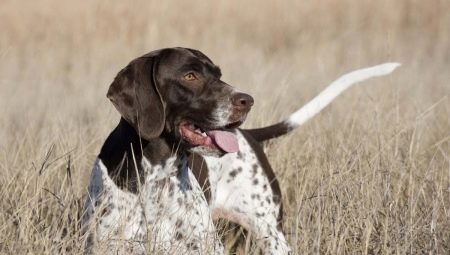
The English hunting dog breed - Pointer for centuries has been an integral companion of the British nobility. The magnificent exterior, typical for cops to become, high intelligence and aristocratic behavior make her a welcome participant in tests and competitions at the most prestigious shows and exhibitions. Born hunters, pointers are transformed, one has only to smell the game. But not all lovers of this breed know everything about their dogs.

What does the breed standard look like and when was it adopted? What kind of dogs were used to create pointers? Today, the breed is no less popular due to its performance characteristics. And when used as companions, these dogs demonstrate wonders of nobility and discernment, literally guessing the wishes of the owner. So who is he - a pointer: a tireless hunter or a dignified companion of a British gentleman?
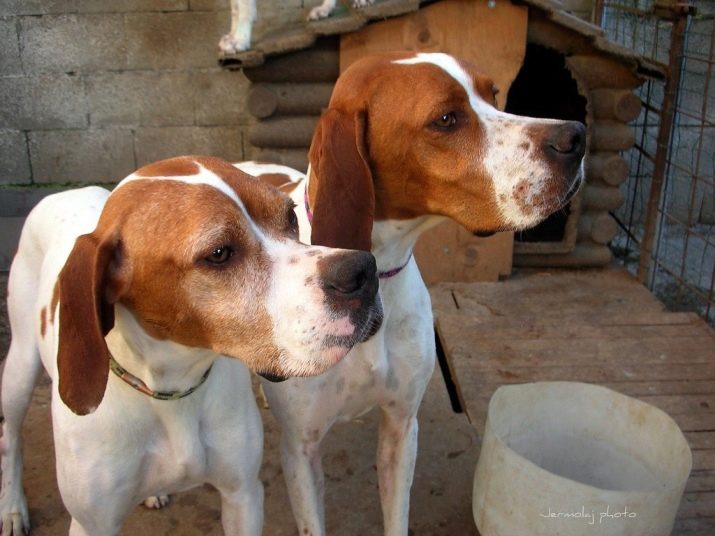
Description
Pointer is a breed of hunting dogs known to English breeders since the 17th century. Her ancestors include the Spanish Pointing Dog, Foxhound, Greyhound, Greyhound, Bulldog and Setter. In the course of the breeding work, the goal was set - to bring out the ideal cop, capable of walking equally well on the air and ground trail. The first specimens were obtained with a predominance of the blood of English hounds, including hounds on the blood trail. But the resulting livestock was not of a good character - it was possible to correct the situation by using setters in breeding work.
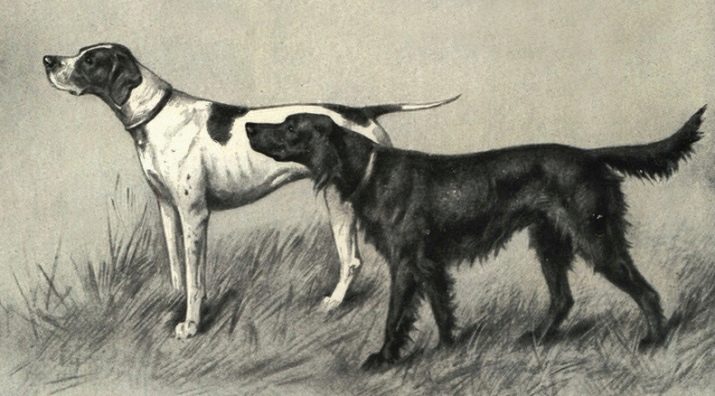
The breed standard describes quite clearly and in detail what a modern English pointer looks like.It is worth noting that in the FCI list the breed has officially assigned to it No. 1, and the last changes to the document were made in 2009. In terms of their external characteristics, pointers are often compared with the shorthaired pointer and drathaar - smooth-haired and wire-haired cops of German origin.
According to the current standard, dogs have a height at the withers reaching 61-69 cm, body weight is not strictly regulated, but obvious signs of obesity are excluded. Desired weight - no more than 25-34 kg.
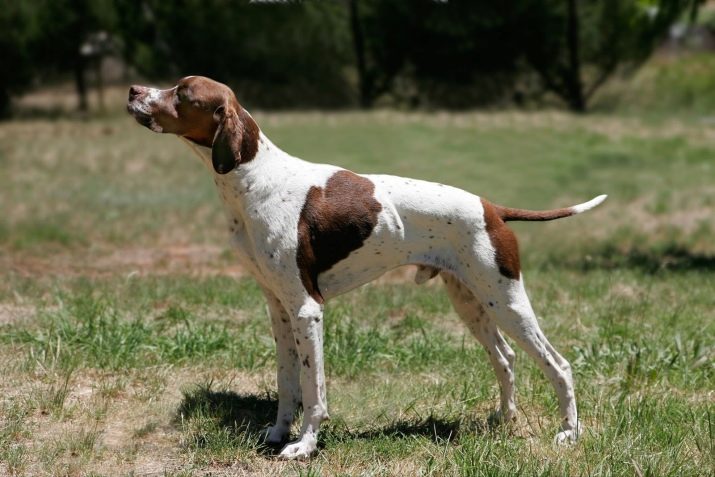
Among other requirements, the following breed characteristics can be distinguished.
- The physique is proportional, strong, lean, with a straight back, a slightly convex lumbar region... Chest well defined, deep, merging into a long oval neck, dewlap or excessive bending should not be present. The nape is well defined, the shoulders are broad.
- The legs are straight, the back is more muscular.... During movement, the gait is smooth, the gait should not demonstrate an intermittent movement. Ligaments on the forelimbs are well defined, visible in standing and in motion. The paw pads are characterized by elasticity, pigmentation to match the nose.
- The tail is long enough, strong, without excessive grace. No knots or bends are allowed. Normally, it is carried at the level of the line of the spine, during movement it shifts in the horizontal plane.
- The head is voluminous, with a convex forehead, pronounced occiput. The furrow is well defined, the stop is not flattened, but rather smooth, without a sharp transition. The muzzle is slightly upturned, with a wide nose - its color should be dark brown or lighter with a yellow shade of coat. The breed is characterized by a scissor bite with a full complement of teeth.
- The eyes are well set, proportional, pigmentation of the eyelids to match the nose. An excessively dark shade of the iris, an evil or aggressive expression of the gaze is not allowed. The main color palette is brown.
- High-set ears, lowered down, retain mobility on the cartilage. The tip is moderately sharp, a slight forward turn is allowed, like a rose petal.
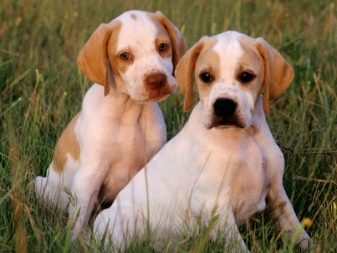

According to the requirements of the standard, Pointers should have a graceful, harmonious, but not too graceful physique. Malformations include sagging or hump in the back, malocclusion, heterochromia, sloping croup, or a wedge-shaped head.

Coat and color
English Pointers are smooth-haired dogs with no undercoat. The outer hair is dense, well-fitting to the skin. Wool protects the dog's body from hypothermia, forms a water-repellent coating. Its length is uniform and does not change throughout the body; hairs on the muzzle are shorter.
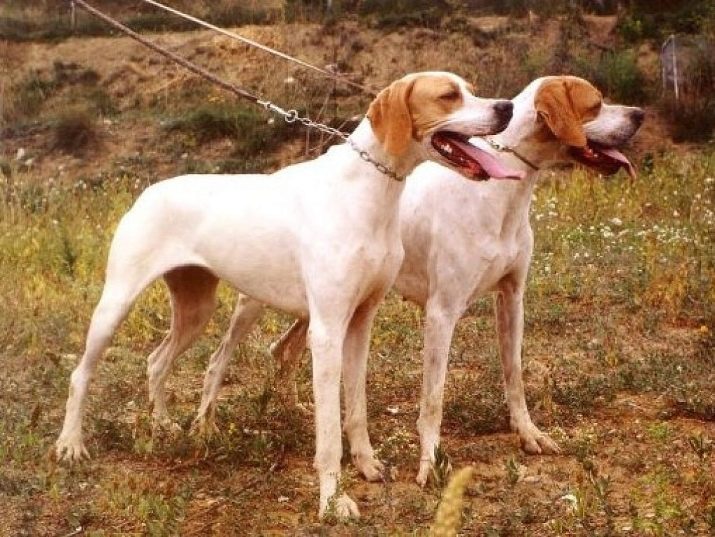
Pure black puppies are almost never found, as well as the white variety.
Although they fit well into the norms of the standard, they are considered pedigree, but only in the absence of contrasting spots on the skin. Basically, in the litter, pointers are born in piebald colors with a white or colored background and spots of black, brown, yellow and red shades. A tricolor is also acceptable, but this color of wool is almost completely withdrawn from use, it is extremely rare.

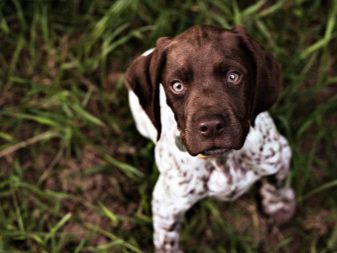
Advantages and disadvantages
English Pointing Dogs generally receive positive reviews and are considered a good choice for hunting and home keeping. Among the advantages of the breed are:
- congenital hunting instincts;
- low level of aggression;
- high intelligence;
- excellent socialization - get along well with other animals;
- visual appeal;
- ease of care;
- good character.
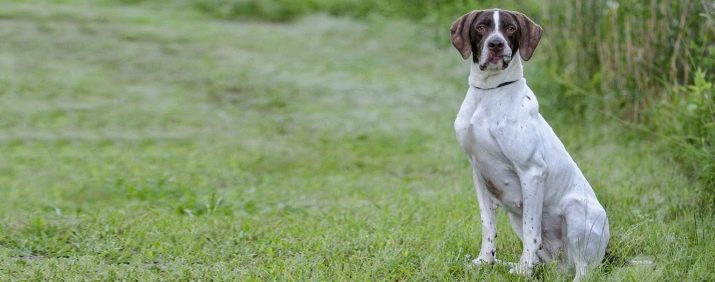
There are also disadvantages. It is customary to refer to them as a strong attachment to a person, which creates difficulties in situations where the dog is left alone. A large cop is not too suitable for keeping in a city apartment. In winter, the dog may freeze, requires additional heating using overalls. Pointers need long walks - they are not suitable for people with low physical activity needs.
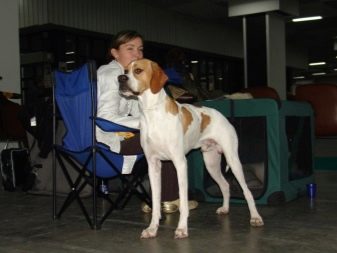

Character traits
By their nature, pointers are athletes who are ready for much for the sake of achievement. They are reckless, active, have an almost inexhaustible supply of energy.
Such a dog definitely needs physical activity, quite intense, work in the field.
With a high level of activity, they maintain a good mood and optimal physical shape.
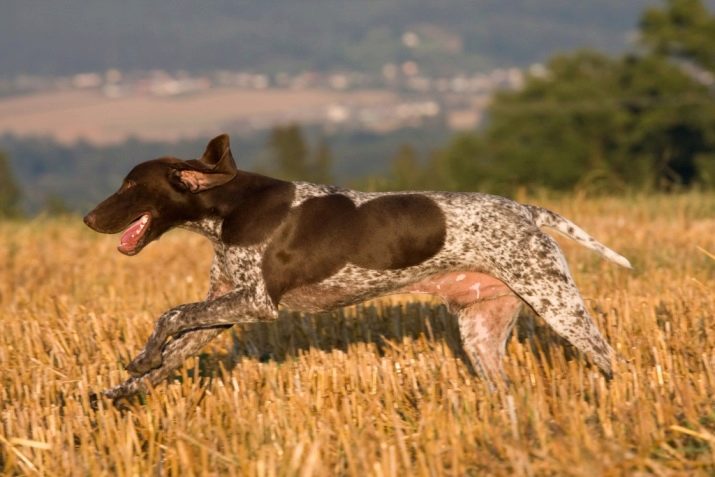
The Pointer is a companion dog in dire need of human companionship. Representatives of this breed are strongly attached to the owner, yearn for him, and can hardly endure loneliness. Already in puppyhood, you need to gradually accustom the dog to independence.
The affectionate, good-natured nature of the English Pointer makes it an excellent pet for family keeping.
An animal of any gender gets along well with children, in the absence of danger, friendly to strangers. Cowardice and aggression in these dogs are considered developmental defects, such are carefully culled out throughout the entire breeding work.

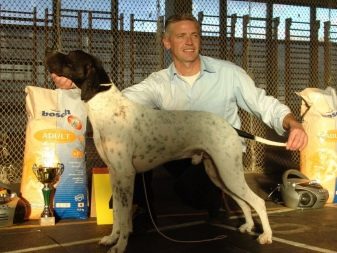
Leadership qualities are highly developed in hunting pointers.
It is very important to direct their development in the right direction from the very beginning, otherwise the dog has every chance of becoming a home tyrant.
It is better to raise an animal in a light, unobtrusive form. If the dog is not turned on for hunting, it is worth finding an activity for it that allows you to regularly release energy. This can be a kind of sports, accompanying the owner in his walks or sports training.
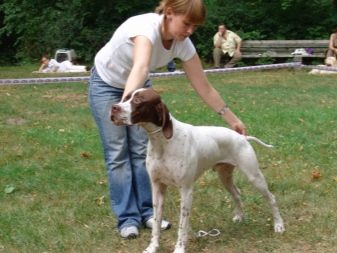
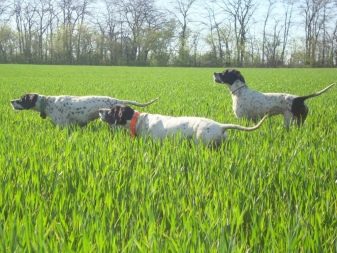
Conditions for keeping
Keeping Pointer dogs requires providing the pet with sufficient space and freedom of movement. The best option would be a country house or a cottage with a fenced yard. Chain keeping is categorically not suitable, in the aviary the animal will also be deprived of movement, it will yearn for the owner.
In a city apartment, a pointer should be started only if there is a spacious area for free walking nearby.

Dogs of this breed need medium hard bedding, located in the line of sight of the owner. It is worth considering that the animal quickly masters sofas and armchairs. Having allowed the puppy to choose them as a place, you should not expect that an adult dog will deny himself the pleasure of using this particular object for sleeping and resting.

What to feed?
The food of the pointer must take into account its high needs for replenishing energy reserves. Ready-made feeds make it easy to choose a diet. It is worth choosing specialized products for large breeds belonging to the super-premium or holistic class. Suitable brands Arden Grande, Eukanuba, Biomill. Adult dogs are fed twice a day. When eating dry food, be sure to give your pet free access to clean and fresh water.
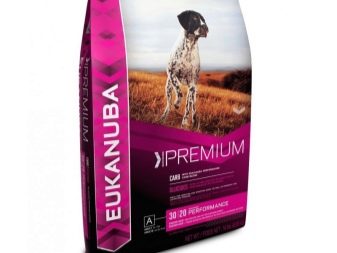
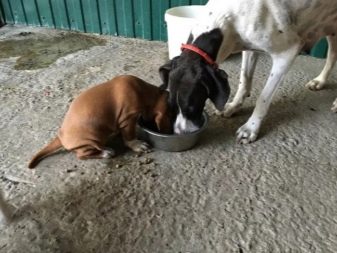
When eating natural products, pointers should receive enough protein - in the form of natural meat of mutton, horse meat, beef, poultry (chicken, turkey), boiled ocean fish. Sources of nutrients also include fresh eggs, natural cottage cheese. Animals get carbohydrates from cereals - oatmeal, buckwheat, rice are suitable. Vegetables are a source of fiber - beets, carrots, cabbage. They are given fresh or boiled.

Any food from the master's table must be excluded from the pointer's food.
Spicy, salty, fatty foods that can negatively affect their health are contraindicated in dogs. In small quantities, the presence of butter is acceptable in the diet. Sausages, sausages, tubular bones are completely banned. To avoid allergies, the dog should be denied peanuts, chocolate, sweets.
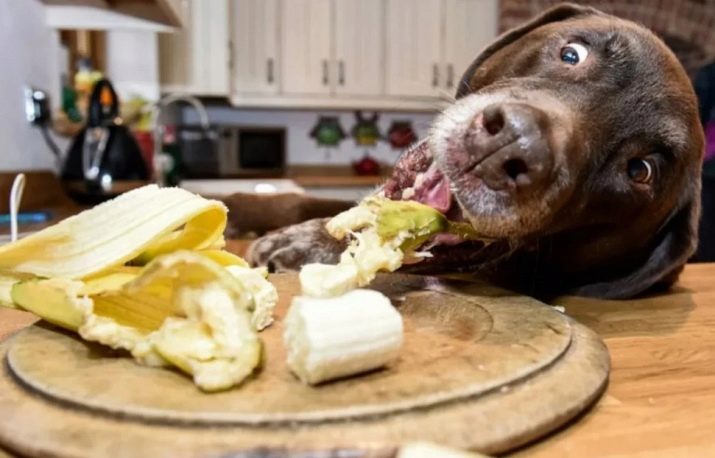
How to care?
Pointer maintenance is quite simple.Its short coat is replaced gradually, throughout the year, there is no need to be afraid of abundant shedding. Brushing is done weekly using a rubber brush. Soft suede or velvet fabric will help to add shine to the coat. Bathing the animal is done as needed, most often with severe body pollution, the appearance of an unpleasant odor.
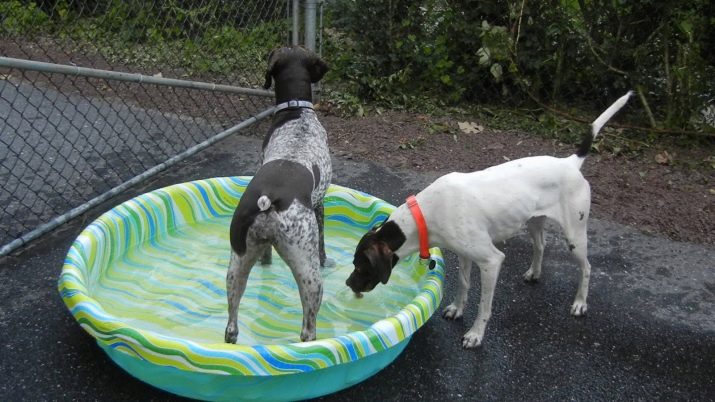
The vulnerable areas of the pointer are the eyes and ears. They can become the basis for the development of a focus of infection. To prevent infection, it is worth regularly sanitizing and inspecting, and removing the resulting contamination.
Flexible ears must be wiped inside with a cotton swab moistened with a special veterinary lotion.
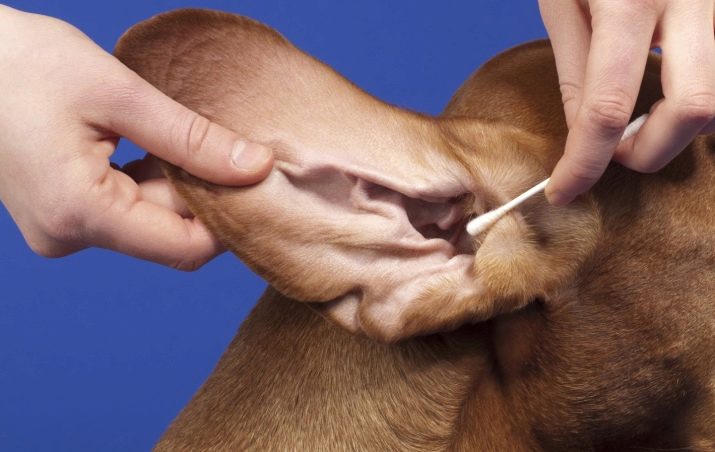
Be sure to pay attention to your dog's eye health.... Pointers have a predisposition to their inflammation, the development of chronic diseases. Adenoma of the third century may develop. Daily handling should include removing visible dirt from the coat.
If redness appears, profuse lacrimation, you need to contact your veterinarian.
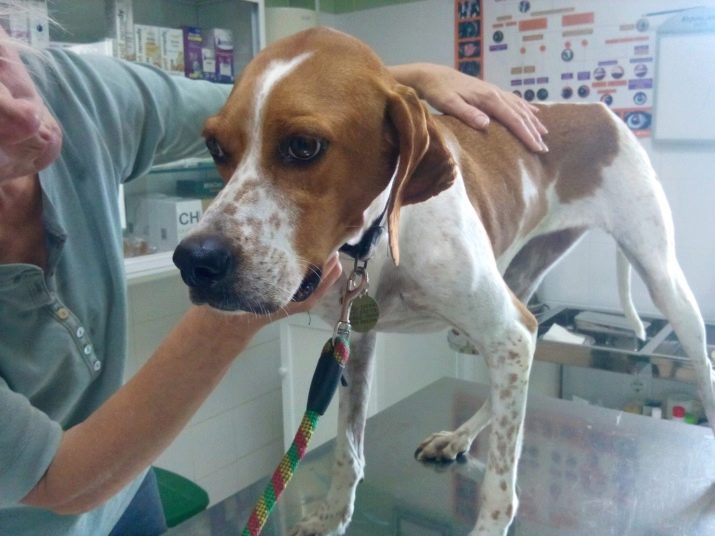
Pointer dogs' teeth need regular inspection and cleaning. Special veterinary pastes are used. If tartar is detected, professional cleaning is recommended.
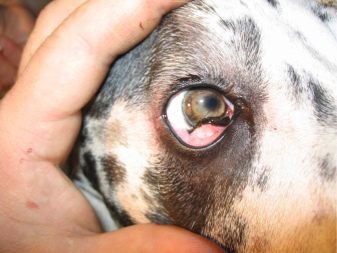

Mandatory claw trimming, in the summer it is necessary less often. In winter, the stratum corneum is worn down worse. It is worth teaching the puppy to cut off the long part of the claw from childhood, otherwise an adult active dog will simply not allow this task to be completed. In addition, you need to monitor the condition of the skin.
English pointers are prone to developing allergies, and dermatitis develops both to food irritants and other external factors.

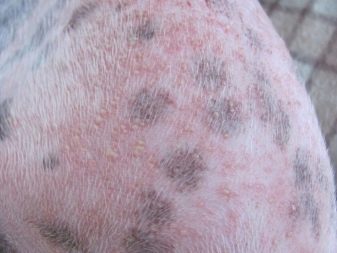
Education and training
The unique features of the pointers and their high intelligence allow dogs to easily learn the basic rules of behavior even without additional efforts on the part of the owner. The animal does not need tough training, it perfectly knows how to feel the permitted boundaries. A high level of socialization allows dogs to learn many skills, simply copying the behavior of the owner or other pets already living in the house.
Easily adopting good habits, pointers from puppyhood quickly comprehend the basic commands - their training gives the owner extremely positive emotions.
Still, you shouldn't give up learning altogether. Pointers are naturally hyperactive, and in the absence of upbringing can cause serious damage to the apartment's environment and property of the owner.
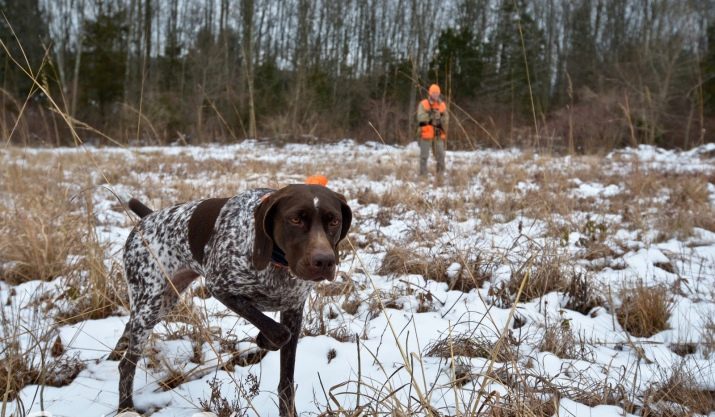
The positive attitude inherent in the representatives of this breed will remain even after training. But the flow of energy will become manageable... In addition, it will be easier for the dog itself to interact with others, understanding what is wanted from it.
Pointers are naturally non-aggressive - towards children, pets, they always show miracles of patience and never show a negative reaction.
But this does not mean that in case of danger, the animal will simply allow someone to offend the owner or threaten his property. A large and strong dog will successfully neutralize even a superior enemy, show tactical thinking and enviable fearlessness in battle.

Raising for the hunt
Working skills are inherent in pointers by nature. Even if the parents were not taken out hunting, their puppies are likely to be able to cope with the tasks assigned to them. The dog makes the first unconscious stances as early as 2-3 months, at the same age the animal's observation increases. In the presence of a working mother, puppies are willingly taken on trips to the forest with all their droppings, and they feel quite confident, adopting the habits of the parent.
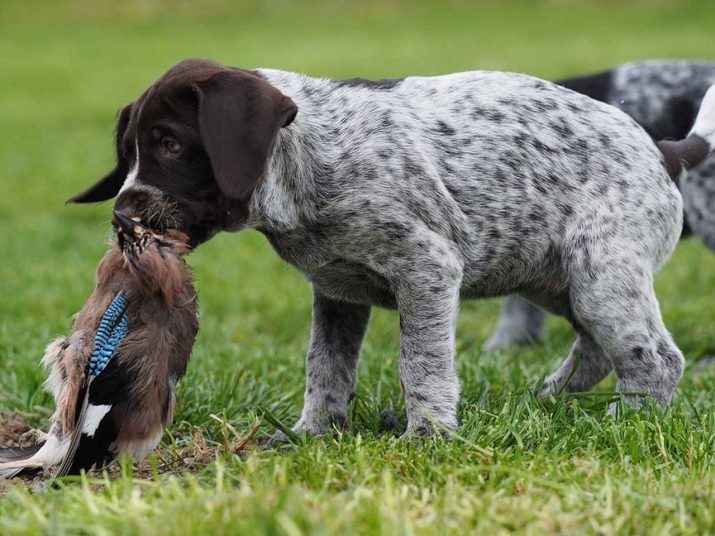
In hunting, pointers demonstrate the ability to educate themselves. If other breeds of cops by the age of 6-7 already lose their skills of working in the field, these dogs only become better in their hunting qualities.In the process of training a puppy, mainly play techniques are used, without coercion and the use of physical force. The breed adapts well to work on waterfowl, is able to track down and drive a hare without apparent effort.

It is important to remember: the pointer is aimed at the chase.... Moreover, both an animal and any moving object can become its object. Having taken the trail, he may not hear the commands, he stops responding to the calls of the owner. In order to avoid dangerous situations, it is highly undesirable to let the dogs off the leash outside of the hunt.

In the next video you can watch the work of the English Pointer on the hunt.






































